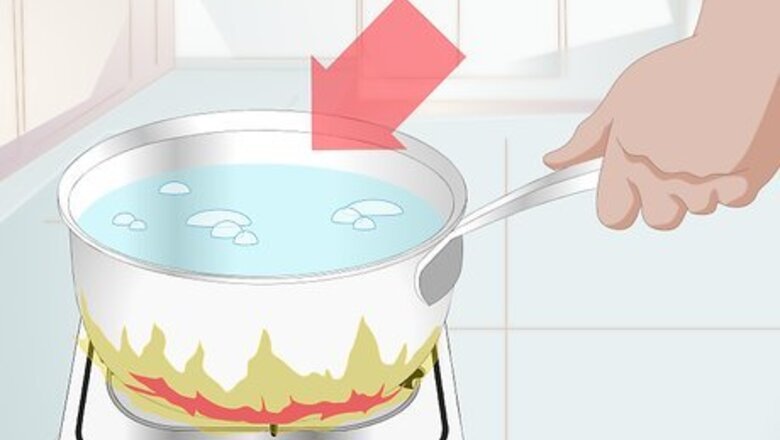
views
Using Warm Water and Cotton Balls
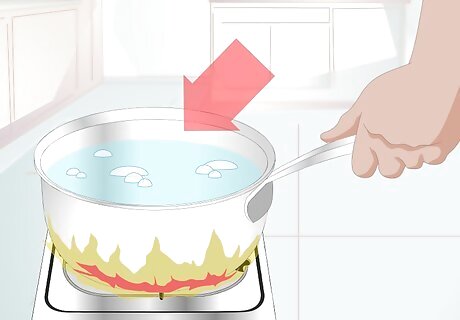
Boil the water. You will need access to sterilized water for this method, as you want to be sure you are cleaning your cat's eyes with the cleanest materials possible. Boil water on the stove or in a kettle. Then, let it cool to room temperature. Pour the water in two small bowls and place them close to you so you can access them easily.

Gather the cotton balls. You will need clean cotton balls to apply the warm water to your cat's eyes. You can also use a clean, soft towel or a cloth. Make sure whatever item you use it is soft to the touch and will not scratch or irritate your cat's eyes further.
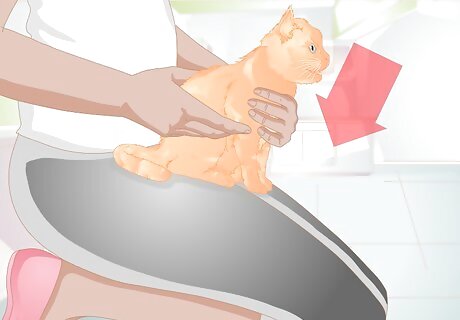
Sit your cat in your lap. You will need your cat to stay still so you can wipe the gunk away from their eyes. Try sitting your cat in your lap with their head facing away from you. Then, hold then under their chin to their head stays still. You may need to work fast to ensure your cat does not move around too much. Alternatively, you can ask a friend or partner to help you hold your cat still. Some pet owners find putting a towel over their cat's head and then adjusting it so their eyes are exposed can help their cat stay still.
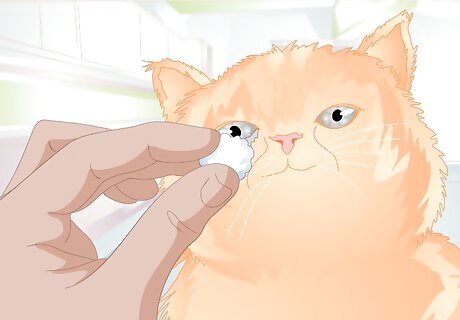
Wipe the gunk from your cat's eyes. Once you have your cat in a still position, dip the cotton ball in the bowl of water. Then, use your dominant hand to carefully wipe the gunk away from one of your cat's eyes. Try not to get any of the gunk in your cat's eye as you remove it. Once you have cleaned one eye, use a different cotton ball and dip it in the other bowl of water. Wipe your cat's other eye with the fresh, wet cotton ball. Make sure you use a different cotton ball for each eye. Never use the same cotton ball twice, as this can spread bacteria and lead to an infection. You can also buy wipes from your local pet store that contain a safe cleaning solution so you don't irritate your cat.
Applying Tea Bags
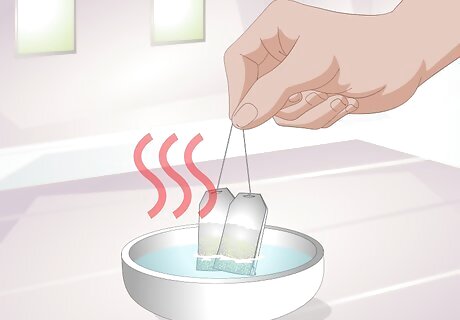
Steep two green or black tea bags. Black and green tea have antibacterial properties and can help sooth an irritated or itchy eye. Use organic tea to ensure your cat is not being exposed to any chemicals or additives. Steep the two tea bags in hot water for three to four minutes. Remove the tea bags and set them on a clean paper towel. This will allow them to cool.
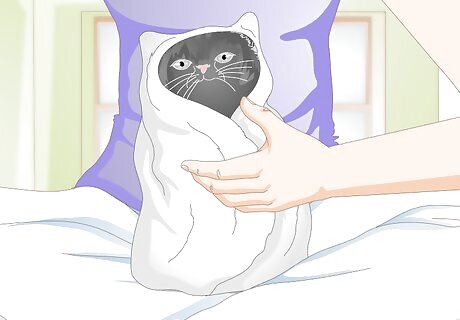
Keep your cat still. You will need to keep your cat very still for this method, as the tea bags will need to sit on her eyes for a few minutes. You may try sitting your cat in your lap and placing a towel over head. Then, you can adjust the towel until just her eyes are exposed. You may also ask a friend or a partner to help you hold your cat still. Sometimes having an extra pair of hands to assist you can make keeping your cat still much easier.
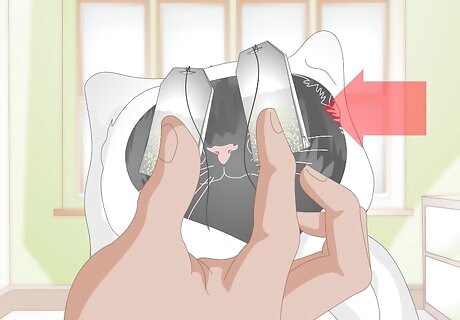
Apply the tea bags to your cat's eyes. Once you have your cat in a static position with her eyes exposed, place each tea bag on her eyes. Make sure they are not too hot before you put them on her eyes as you do not want to burn or irritate her. Let the tea bags sit on your cat's eyes for one to two minutes. If there is any crust around your cat's eyes, the tea bags will help to loosen it and make it easier to wipe off.
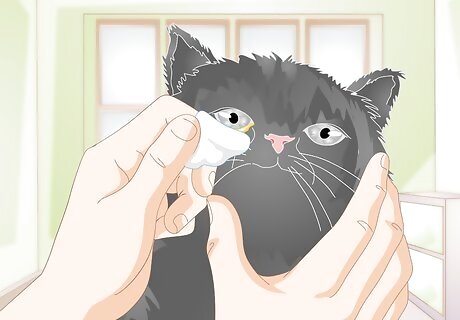
Wipe away any gunk from your cat's eyes. Remove the tea bags. Then, use a clean, soft cloth dipped in warm water to wipe away any remaining gunk. The gunk should come off easily due to the warmth of the tea bags.
Bringing Your Cat to the Vet
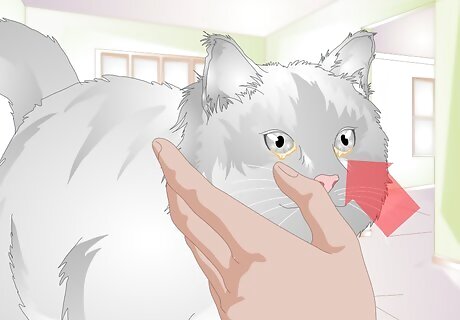
Check your cat for signs of an eye infection. You should bring your cat to the vet if you notice the gunk is not going away and your cat's eyes appear very red, as this could be a symptom of conjunctivitis, or pink eye. You should also bring your cat to the vet if the gunk looks green or yellow and is sticky or smelly, as this could be a sign of a bacterial infection. If you notice your cat is constantly pawing her eye or scratching at it, you should bring her to the vet. She may also tear up a lot and her eyes may appear sensitive to light. These are all possible signs of a cornea or inner eye issue. Cat breeds that have short snouts, such as Persians, are more susceptible to eye drainage.
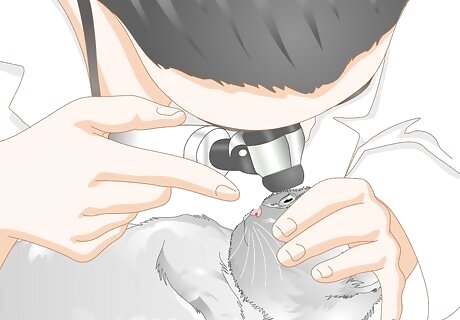
Get a diagnosis from the vet. Allow your vet to examine your cat's eyes. She may take a sample of the gunk to test it for bacteria and observe if your cat's eyes appear very red, inflamed, irritated, or sensitive to light.
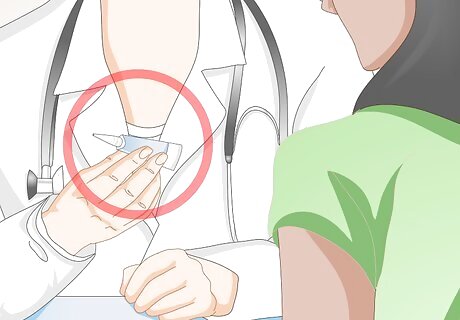
Discuss your treatment options. Your vet will recommend specific treatments based on the type of infection or issue your cat has. Many eye issues can be treated with antibiotic eye ointment or drops that you give your cat for a set period of time. Often, with the right treatment, eye issues heal well in cats. If your cat has conjunctivitis or corneal disorders, your vet may recommend an antibiotic ointment. She may also suggest keeping your cat's eyes clean on a regular basis. If your cat has a blocked tear duct, she may use plain water or a saline solution to flush out the duct.


















Comments
0 comment